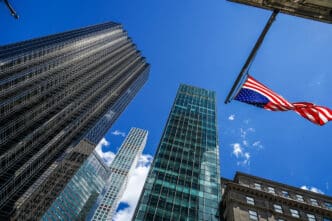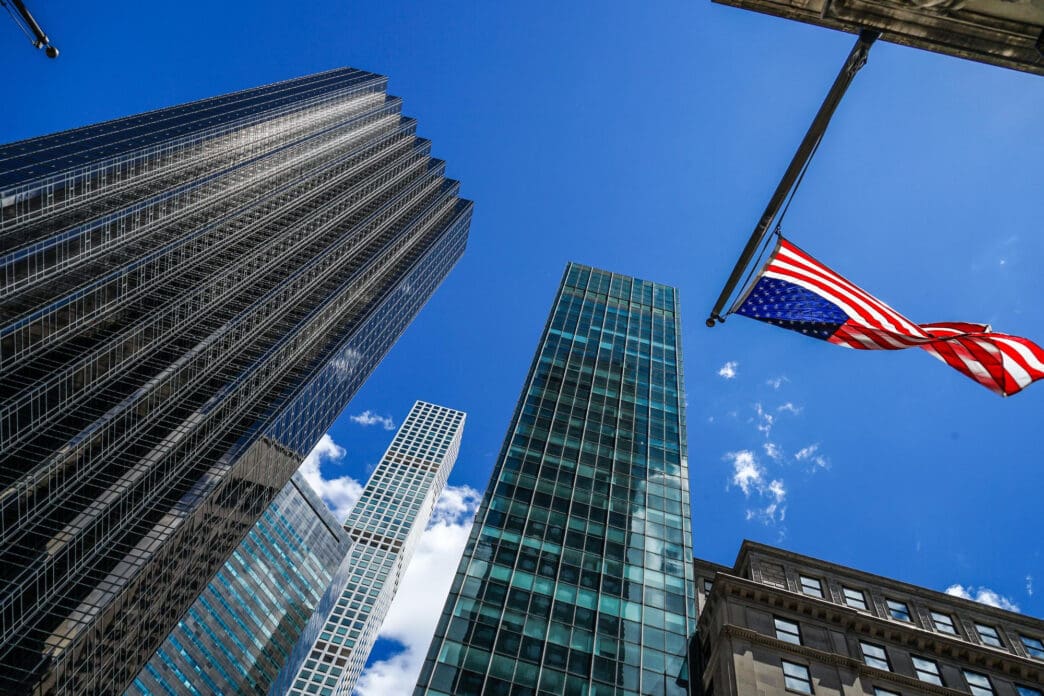KEY POINTS
- The American economy shows a contradiction with robust 3.8% GDP growth in Q2 2025, primarily fueled by the unwavering spending of the American consumer, particularly in the services sector.
- This strong growth is occurring despite significant headwinds, including a cooling labor market (adding only 22,000 jobs in August and a rising unemployment rate of 4.3%), and persistent inflation (Core PCE growing at a 2.9% annual rate).
- The economy faces structural challenges from a constricted labor supply due to stricter immigration policies and the impending impact of new tariffs, which are widely expected to accelerate price hikes and complicate the Federal Reserve’s decisions on further interest rate cuts.
WASHINGTON D.C. – The American economy is presenting a puzzle that has economists and policymakers watching with bated breath. Official data reveals a surprisingly robust 3.8% GDP growth in the second quarter of 2025, a figure that suggests a powerful underlying momentum. Yet, a look beneath the surface reveals a landscape of contradictions: a labor market that is demonstrably cooling, persistent inflation that refuses to fully recede, and a new wave of tariffs poised to raise costs for consumers and businesses alike.
This unusual dynamic, where strong growth coexists with significant economic headwinds, is fueled primarily by the relentless American consumer. However, with immigration policies constricting the labor supply and new tariffs threatening to accelerate price hikes, the central question is no longer about the economy’s current strength, but about its durability. The final months of 2025 are shaping up to be a critical test of whether consumer resilience can continue to defy economic gravity.
The Consumer: The Unwavering Engine of Growth
At the heart of the economy’s surprising performance is the American consumer. Accounting for roughly 70% of all economic activity, consumer spending has remained remarkably strong despite four years of inflationary pressures. The latest figures show a 0.6% jump in consumer spending in August, following a solid 0.5% increase in July, keeping the economy on a firm footing. This resilience is visible across the board, from strong sales of durable goods and automobiles to continued investment in home improvements.
However, the real engine room of this growth is the services sector. Industries like travel, hospitality, entertainment, healthcare, and financial services have not just recovered but are experiencing substantial growth. This continued demand for experiences and services is a key factor propping up the headline GDP numbers.
“We are witnessing a consumer that is seemingly determined to maintain their standard of living, even in the face of higher prices and a less certain job market,” explains a senior economist at a leading financial institution. “While savings rates have come down, the willingness to spend, particularly on services, has been the single most important factor preventing a slowdown.” This strength, combined with an improving trade balance—driven by a reduction in imports and robust exports in technology and agricultural products—helped paint the rosy picture of 3.8% growth in the second quarter.
The Labor Market’s “Curious Equilibrium”
While consumers keep spending, the engine that powers their paychecks—the labor market—is showing clear signs of strain. The August 2025 jobs report was a stark indicator of this cooling trend, with the economy adding a mere 22,000 jobs, far below expectations. Compounding the weakness, job gains from previous months were revised down significantly, painting a picture of a market that has been slowing for some time.
Consequently, the national unemployment rate has ticked up, reaching 4.3% in August, a noticeable increase from 4.1% at the end of last year. While this rate remains low by historical standards, the trend is undeniable.
Federal Reserve Chairman Jerome Powell recently described the situation as a “curious equilibrium.” In his analysis, the market is defined by a sharp slowdown in both the supply and demand for workers. “We are in a state of slow hiring and slow firing,” Powell noted, indicating that while companies are not laying off workers in large numbers, they are also increasingly hesitant to bring on new staff. This hiring chill is directly linked to one of the most significant, yet underreported, factors shaping the current economy: immigration.
The Immigration Squeeze: A Constricted Labor Supply
Chairman Powell has explicitly connected the slowdown in hiring to changes in immigration, citing “very little, if any, growth in the supply of workers.” This observation is backed by a growing body of evidence showing that stricter immigration enforcement and recent policies are having a direct and negative impact on the U.S. labor pool and, by extension, the broader economy.
Immigration raids and the climate of uncertainty have led to a substantial drop in labor force participation among non-citizens. Industries that have historically relied on immigrant labor—such as agriculture, construction, hospitality, and home healthcare—are now experiencing stagnant or even declining job growth. This is not a matter of debate but a direct consequence of a shrinking workforce.
The long-term economic implications are significant. Economic models project that mass deportations could exacerbate these labor shortages, driving up costs, fueling inflation, and ultimately slowing economic growth. One analysis suggests a potential reduction in GDP of between 2.6% and 6.2% over the next decade. Furthermore, the fiscal cost is staggering, with estimates suggesting such policies could add nearly $1 trillion to budget deficits over ten years, while potentially leading to lower wages and job losses even for U.S.-born workers as industries contract.
The Tariff Wildcard and the Inflation Specter
As the economy grapples with a tight labor market, it now faces another headwind: a new round of tariffs. Scheduled to take effect in October 2025, these tariffs on key imports like pharmaceuticals, trucks, and furniture are widely expected to feed an inflation rate that has already proven stubbornly high.
The Federal Reserve’s preferred inflation gauge, the core Personal Consumption Expenditures (PCE) price index, grew at a 2.9% annual rate in August, up from 2.5% in April. The broader Consumer Price Index (CPI-U) tells a similar story, also rising 2.9% over the past year. Economists are bracing for an acceleration in the fourth quarter as businesses begin passing the increased costs from tariffs onto consumers. The effective tariff rate for U.S. firms and consumers has already climbed to approximately 10% and continues to rise.
This has placed the Federal Reserve in a difficult position. The central bank implemented a cautious quarter-point rate cut in September, bringing the federal funds rate to a range of 4% to 4.25%, in a bid to support maximum employment. However, officials have made it clear they are adopting a wait-and-see approach, holding off on further cuts until they can fully assess the inflationary impact of the new tariffs.
An Economy at a Crossroads
The U.S. economy is navigating a complex and challenging path. Its current growth is a testament to the resilience of the American consumer and the strength of its vast services sector. Government investments from the Bipartisan Infrastructure Law, the CHIPS and Science Act, and the Inflation Reduction Act are also working in the background, aiming to expand the country’s productive capacity for the long term.
However, the foundation of this growth is being tested. The strong consumer is facing the dual pressures of a weakening job market and rising prices. The structural labor shortages, intensified by immigration policies, will not be easily resolved and will likely continue to put upward pressure on wages and costs. As the new tariffs take hold, the delicate balance the economy has maintained could be disrupted. The final quarter of 2025 will be decisive, revealing whether the great contradiction of 2025 can continue, or if the mounting pressures will finally pull the economy back down to earth.
Sources:
- Job market’s effect on the economy – U.S. Bank
- U.S. jobless aid applications fall after surging to nearly 4-year high – PBS News
- Employment Situation Summary – U.S. Bureau of Labor Statistics
- Federal Reserve issues FOMC statement – Federal Reserve








